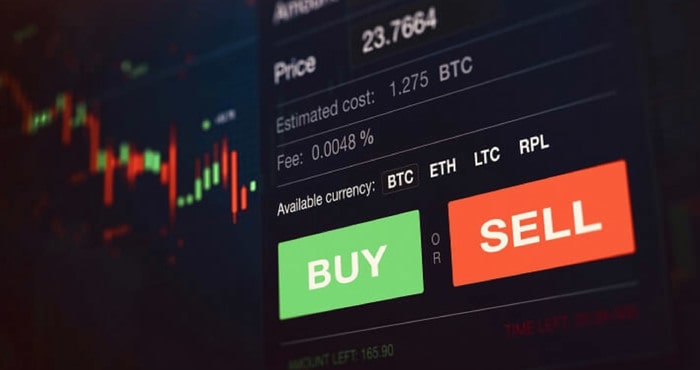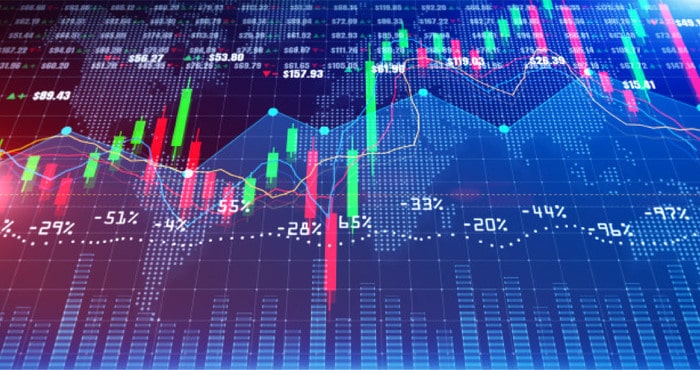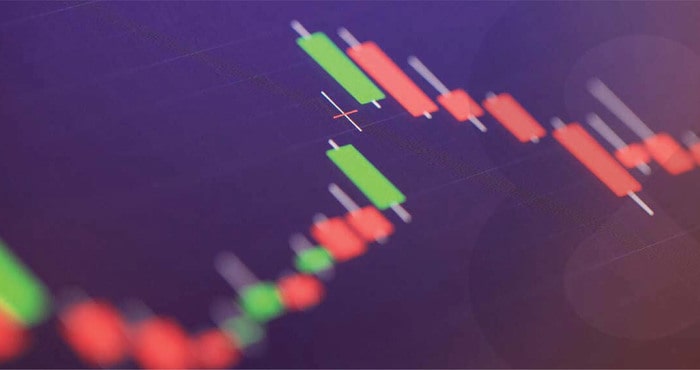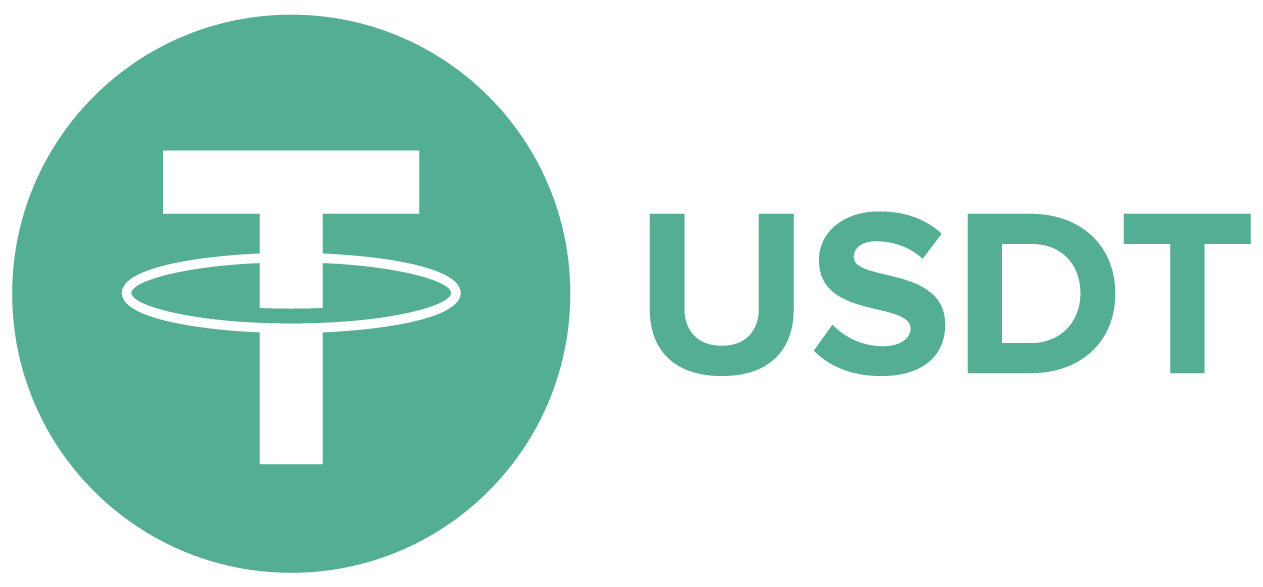Chapter 2 - How buying and selling occurs
Lesson 2.1 - Peaks & Troughs
The Concept of Buying and Selling in the Forex Market

You know that in the currency market you can get profit from trading regardless of whether the currency market is moving upward or downward. We mentioned previously that it is one of the prominent features of the currency exchange.
You will start buying the currency that you expect to rise in price at the lower price, and you will wait for the price to rise to sell it at the high price and get the difference as a profit. Similarly, you will start selling the currency that you expect to decrease in price at the high price, and you will wait for the price to decrease in order to buy it back at the lower price and keep the difference as a profit.
There are absolutely no restrictions in trading in the bearish currency market, as the case in the stock market, simply because the currencies are traded in pairs, when the market turns to bearish, it means that the other currency price rises.
When the process begins, whether buying or selling, we say: You have opened a position,
and when the process ends selling or buying we say: You have closed the position.
When you start a position, you will not be able to know whether you have made a profit or lost until you close the position.
For example: - If we assume that you opened a position to buy 1 Euro lot on the basis of your expectation that the price of the Euro will rise,
after you buy the Euro, you will not know whether you will actually make profit or lost until you sell your Euro and close the position.
If you sell it at a price higher than the buying price, you will make a profit, and if you sell it at a price lower than the buying price, you will be at a losing position.
The position that begins with a purchase ends with a sale. After the position is closed, you can determine your profit or loss.
Likewise, if we assume that you have opened a position by selling 1 Euro lot based on your expectation that the Euro price will decrease.
After you sell the Euro, you will not know whether you have made profit or lost until you repurchase your Euro and close the position.
If you bought it at a price lower than the selling price, you will be in a profitable position, and if you buy it at a price higher than the selling price, you will be a loser.
The position that begins with a sale ends with a purchase.
Therefore, you can understand the opening and closing of a position as follows:
Opening a position means the beginning of a process, whether it is selling a currency or buying a currency.
Closing a position means the end of a process, whether it is selling a currency or buying a currency.
We previously mentioned that the contracts for buying and selling currencies are forwards, as we do not own the currencies in which we trade, we only trade them in accordance with the margin trading system and then return them again, so every position is a forward contract that must be closed.
Enter and Exit Point

Enter point: The price at which the trade is opened.
Exit point: The price at which the position is closed.
Before you open a position, the increase or decrease of the currency price will not matter to you. At this time, you are only monitoring the prices to determine whether the currency price will rise or fall, but you are not affected by the movements in the market.
However, after you open a position, whether buying or selling, what matters most to you is the currency rates ... !!, because the price movement will determine whether you are a winner or a loser.
Therefore, we say that the price at which the position is opened is called the entry point, because by this you will be entering the market affected by what is going on therein.
Therefore, we say that the price at which the position is closed is called the exit point, because then you are outside the market, and you will no longer care about the direction of the price movement, and you restore your position as an observer of the market movement.
Actual profit and loss
Floating profit and floating loss
Profit &loss and floating profit &loss
We have previously stated that you cannot know whether you have made profit or lost as long as you did not close the position. Through our examples in explaining the margin trading system, we casually referred to the terms floating profit and floating loss,
but here we will explain more about the meaning of actual profit or loss, as well as what is meant by floating profit and floating loss.
Example for clarification
For example: - If you buy 1 Euro lot at a certain price on the basis that you expect such price to rise.
After buying it, the Euro started to drop 10 pips instead of rising.
At this point, you are losing $ 100 assuming that the pip value = $ 10.
That is, if you sell your Euro at this moment at the current market price, which is 10 points less than the buying price of the Euro, your loss = $ 100.
Suppose the price drops 30 pips from the buying price. At this moment, you are losing $ 300,but it is not a real loss.
As long as you did not close the position and did not sell the lot you have, it is called your floating loss. Any loss is not realized yet as long as you did not sell your Euros,and it will not turn into a real loss until after you actually sell them.
As long as you have not sold, everything is possible, the price drop may increase to 60, 70, 80 points, and the price may suddenly rise again.
If we assume that after you bought the Euro lot, the price increased 10 points from the price at which you bought it, this means that you win at this moment $ 100 if you decide to sell at the current market price that exceeds your buying price by 10 points. Then, your profit = $ 100.
If the price goes 50 points higher than the buying price, you now have a $ 500 profit if you decide to sell at the current price,but it is not a real profit.
As long as you did not close the position and did not sell the lot you have, it is called your floating profit,and it will not turn into a real profit until after you actually sell them.
Floating loss and Draw Down

We have already indicated in the features of the currency market, that it is developing significantly, and we have quickly indicated a new form of trading which is social trading, which is based on the fact that you are linking your account, with the account of one of the traders, and copying the deals he executes.
When you choose the trader that you will follow, you will find that the size of his floating loss is important and crucial in your investments, as his method of trading can make him bear the price reversal by a large amount such as 200 or 300 points before his position achieves the specified goal, and that may be a reason to liquidate your account.
Floating loss is the amount of market reflection on your position.
Example for clarification
You bought a lot of Euros in the hope that it would go up, and you will sell it at a higher price, but after you opened a Euro buying position, the Euro began to fall, until it dropped 70 points.
This means that the market is moving in the opposite direction of your position, and you have a floating loss of 70 pips,so if you are a trader and you have investors who follow your positions, perhaps the big reversals may knock their accounts out, each according to the size of his capital and the amount of his risk.
Thus, there is the so-called draw down.
It is a ratio to measure the amount of the trader positions reflection before they reach their goals. The lower the draw down percentage becomes, the more skilled the trader is in determining market entry points.
Draw Down is a form of floating profit and floating loss in financial markets.


 English
English





